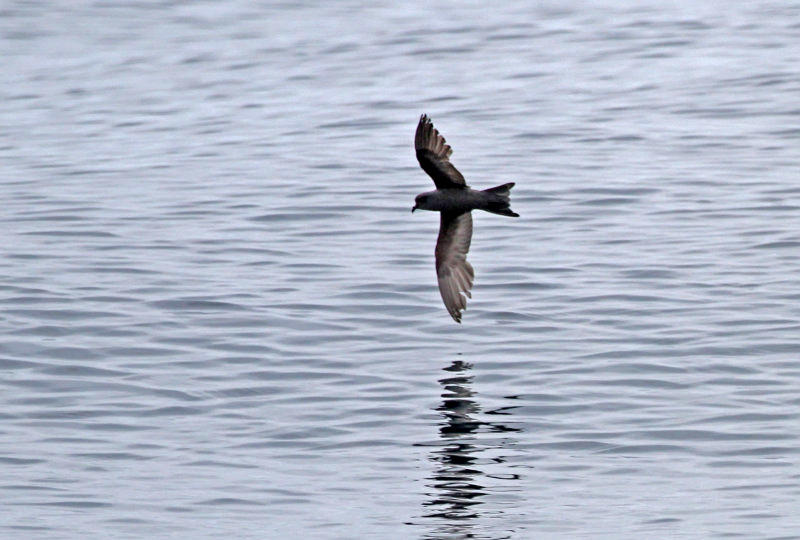
Oil spills are devastating for marine birds. And it’s not just the ones we see covered with oil on our beaches – it’s the many more we never see that suffer a needless death.
Let’s talk about what an oil spill could do to the rare Ashy Storm-petrel, which lives almost exclusively off the coast of California. This bird’s global population is only about 20,000 birds. Post-breeding, in the late fall, the birds aggregate in large feeding flocks on California’s continental shelf, in food-rich areas such as Cordell Bank, Gulf of the Farallones, and Monterey Bay.
I remember back in 2013, while on a Shearwater Journeys pelagic trip out of Bodega Bay, I spotted a distant shimmering haze that I knew was a large flock of storm-petrels rising and settling on the water. We motored over, knowing we’d be dealing with a lot of birds, but still needing to do a count.
Luckily, seabird experts Peter Pyle and Steve Howell were on board and did their best to make counts. They arrived at similar estimates of about 10,500 Ashy Storm-petrels.
I remember that day when I hear about the Trump Administration’s desire to drill for oil along the outer continental shelf and in national marine sanctuaries. One oil spill in exactly the wrong place could wipe out more than half of all Ashy Storm-petrels, which would no doubt lead to its extinction. Dozens of other marine bird species would be at serious risk, as well.
By Anna Weinstein
Monthly Giving
Our monthly giving program offers the peace of mind that you’re doing your part every day.




